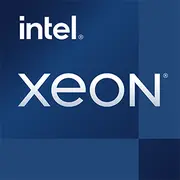Intel Xeon E3-1535M v6

Intel Xeon E3-1535M v6: A Processor for Professionals in the Era of Hybrid Work
Introduction
In 2025, mobile workstations continue to be a key tool for engineers, designers, and IT specialists. The Intel Xeon E3-1535M v6 processor, released in 2017, can still be found in second-hand devices and some niche new laptops. Despite its age, it remains relevant due to its unique features. Let's explore who needs this CPU today and for what purposes.
1. Architecture and Manufacturing Process: The Kaby Lake Legacy
Code Name and Process Technology
The processor is built on the Kaby Lake architecture (7th generation Intel Core) with a 14nm manufacturing process. This is the last generation before Intel transitioned to 10nm, which explains its optimized but not revolutionary structure.
Cores, Threads, and Frequencies
- 4 cores / 8 threads thanks to Hyper-Threading.
- Base frequency: 3.1 GHz, maximum in Turbo Boost — 4.2 GHz (for a single core).
- L3 cache: 8 MB.
Integrated Graphics
The built-in GPU — Intel HD Graphics P630 with a base frequency of 350 MHz and a peak of 1.1 GHz. This is a specialized solution for workstations, supporting:
- 4K displays via DisplayPort/HDMI;
- OpenCL 2.0 and DirectX 12 APIs;
- Quick Sync technologies for video encoding.
Architecture Features
- Support for ECC memory — critical for memory-intensive tasks (e.g., CAD modeling).
- vPro and Trusted Execution technologies for corporate security.
2. Power Consumption and TDP: Balancing Power and Efficiency
The processor's TDP is 45 W, which is typical for mobile workstations. However, in 2025, this value appears high compared to modern chips (e.g., Apple M3 Pro with TDP of 30 W).
What Does This Mean for Users?
- A laptop with this CPU requires a powerful cooling system.
- In idle mode, power consumption drops to 5-7 W thanks to SpeedStep technology.
- Under peak loads (rendering, code compilation), overheating is possible in thin chassis.
3. Performance: Numbers and Real-World Tasks
Geekbench 6: Single-Core 1191 / Multi-Core 3703
For comparison:
- Intel Core i7-1260P (2022): ~1800 (Single), ~8500 (Multi).
- Apple M2 (2023): ~2600 (Single), ~10000 (Multi).
Use Cases:
- Office Tasks: Working with documents, browsers (20+ tabs), Zoom — the processor handles these without delays.
- Multimedia: Editing 4K video in DaVinci Resolve — rendering will take 30% longer than on i7-12700H.
- Gaming: In 2025 games (on low settings), FPS will be around 25-35 (e.g., _Cyberpunk 2077_ via FSR 3.0). The HD P630 is 4 times weaker than the modern AMD Ryzen 7 8840HS iGPUs.
- Turbo Mode: In brief tasks (launching applications, exporting PDFs), the frequency rises to 4.2 GHz, but during sustained loads, it drops to 3.5 GHz due to overheating.
4. Use Cases: Who Is the Xeon E3-1535M v6 For?
- Engineers and Architects: ECC memory support and stability in CAD applications (AutoCAD, SolidWorks).
- IT Specialists: Virtualization (VMware, VirtualBox) and code compilation.
- Photographers and Designers: Working in Adobe Lightroom or Photoshop with large files.
Not Suitable For:
- Gamers — weak graphics performance.
- Users for whom battery life is critical — high TDP reduces operational time.
5. Battery Life: The Cost of Performance
With a TDP of 45 W, laptops with this processor rarely run longer than 4-5 hours under moderate load (web browsing, office tasks).
Power-Saving Technologies:
- Intel Speed Shift: Dynamic frequency adjustment to reduce power consumption.
- C-States: Disabling unused cores.
Tip: Look for devices with a battery of at least 90 Wh (e.g., Dell Precision 7520) — this can extend battery life to 6 hours.
6. Comparison with Competitors
Intel Core i7-7820HQ (2017):
- Similar performance, but lacks ECC support.
AMD Ryzen 7 PRO 5850U (2021):
- 8 cores / 16 threads, TDP 15 W.
- Multi-Core in Geekbench 6 — ~7500.
Apple M1 (2020):
- Single-Core — ~2300, Multi-Core — ~8300.
- 3 times more energy-efficient.
Conclusion: The Xeon E3-1535M v6 lags behind modern counterparts in performance and efficiency but excels in stability and ECC support.
7. Pros and Cons
Strengths:
- Reliability and ECC support.
- Good performance in single-threaded tasks.
- Compatibility with professional software.
Weaknesses:
- High power consumption.
- Outdated graphics.
- Limited availability in new laptops (prices from $1500 for models in 2024-2025, e.g., Lenovo ThinkPad P51s).
8. Recommendations for Laptop Selection
Types of Devices:
- Mobile Workstations: Dell Precision 7520, HP ZBook 15 G4.
- Industrial Laptops: Panasonic Toughbook 55.
What to Pay Attention To:
- Cooling: Two fans and copper heat pipes.
- Memory: A minimum of 32 GB DDR4 with ECC.
- Display: 4K IPS for professionals.
2025 Prices:
- New laptops with this processor — starting at $1500 (basic configurations).
- AMD Ryzen 7 PRO 6850U alternatives — starting at $1200 with better battery life.
9. Final Conclusion: Who Is the Xeon E3-1535M v6 For?
This processor is the choice for those who prioritize stability and accuracy, rather than peak performance. It is ideal for:
- Corporate users upgrading their workstation fleet.
- Specialists working with outdated professional software requiring ECC.
Alternative: If ECC support is unnecessary, consider laptops based on Ryzen 7 PRO or Apple Silicon — they will offer a better balance of power and battery life.
Conclusion
Intel Xeon E3-1535M v6 is a niche solution for professionals who value reliability. In 2025, it should only be chosen under specific requirements; in most cases, modern alternatives are a better option.
Basic
CPU Specifications
Memory Specifications
GPU Specifications
Miscellaneous
Benchmarks
Compared to Other CPU
Share in social media
Or Link To Us
<a href="https://cputronic.com/cpu/intel-xeon-e3-1535m-v6" target="_blank">Intel Xeon E3-1535M v6</a>